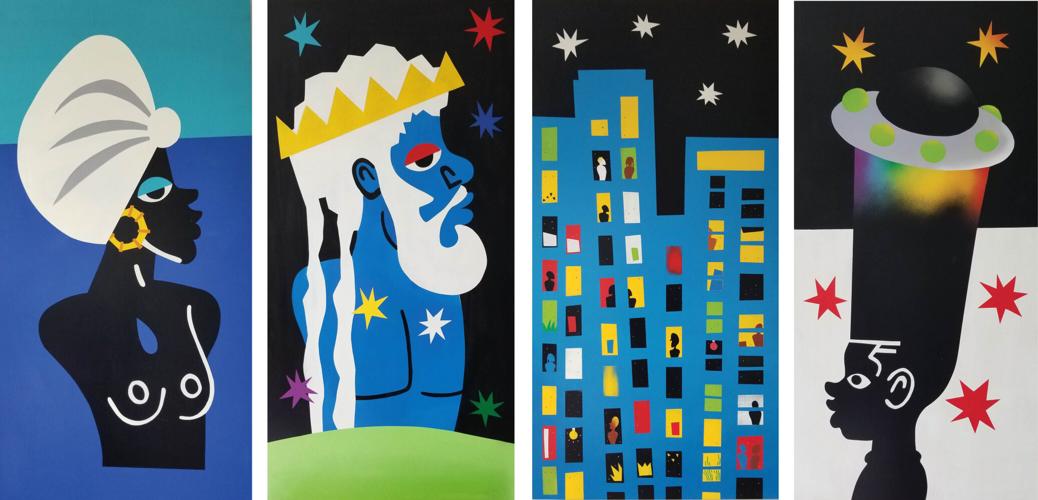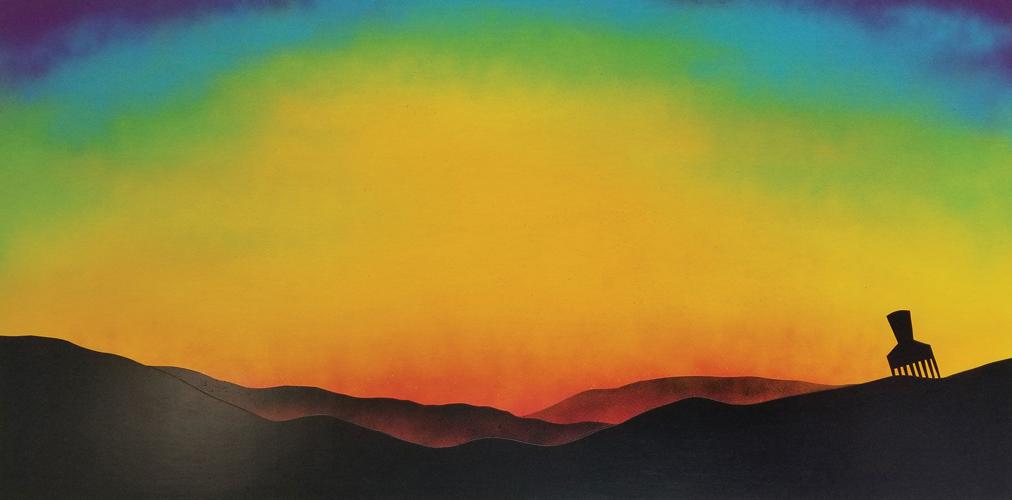Cëcret by Cë Gallery bills itself as a speakeasy-style art gallery, and its current exhibition of work from XPayne perfectly encapsulates that feeling of secrets hidden in plain sight. On the heels of Cë Gallery’s recent awe-inspiring exhibition of paintings from legendary musician George Clinton, Past, Present, and Afrofuturism is another marker on the road to establishing Nashville’s visual identity as bolder and Blacker than anything we’ve so far seen.
The exhibition is divided into acts like a theatrical production — there’s the Past, Present and Future, as well as an Epilogue. This organization asks its audience to consider the magnitude of human history and achievement — it’s like a portrait hall for past lives, or a fantasy set of playing cards all laid out in a row.
Among the first works are portraits of religious figures from the West African Yoruba tradition. “Olodumare” shows an aged man with white dreadlocks and a crown. In profile, his heavy-lidded eye is dignified, and the outlines of his nose and ears are gestural but bold, like the shorthand markings of graffiti art. He is every bit the Yoruba version of Zeus — even the tarot-deck stars that orbit him seem entirely under his control.
Yemeya is the Yoruba goddess of the sea, and XPayne interprets her with a blue drop of water on her chest, dressed in nothing but a turban and gold bamboo hoop earrings, as if she’s just transformed from a mermaid. I’m reminded of Helmut Newton’s photograph of Elizabeth Taylor in her pool, and the 2015 self-portrait of Juliana Huxtable covered in body paint. These paintings are grand portraits that are equal parts sacred and sexy, as if religious icons could be centerfolds.
In his writing around the show, XPayne references the urgency of visualizing the future. “This is not simply about Blacks in space (although it is that too),” he writes. “This is about using culture and history to imagine an unseen and prosperous future. Imagining how the future looks provides mental armor for the now. This show is about adaptation and change in the face of danger.”

"Black Horizon"
It’s appropriate, then, that several of the paintings in the exhibition’s Future category are comparatively lighthearted. “Beam Me Up” shows a boy with a hi-top fade afro that’s tall enough for a spaceship to crash-land on it. His blank, cherubic face looks straight ahead, as if unaware or unconcerned with the science fiction happening just above him.
The paintings in Past, Present, and Afrofuturism use the same bold colors and stylish symbolism of Nina Chanel Abney’s collages; the same totemic minimalism of Kerry James Marshall’s “Scout” portraits. But one of the show’s most deeply felt connections is the kinship between these works and the Aaron Douglas murals from 1930 at Fisk University. Iconic without being reverential, a work like “Black City’’ seems to reference both Romare Bearden’s 1971 masterpiece “The Block” and Spike Lee’s 1989 film Do the Right Thing. That kind of co-mingling of art history and pop culture elevates XPayne’s canvases into the future of contemporary art — he is both the spaceship and the afro.




